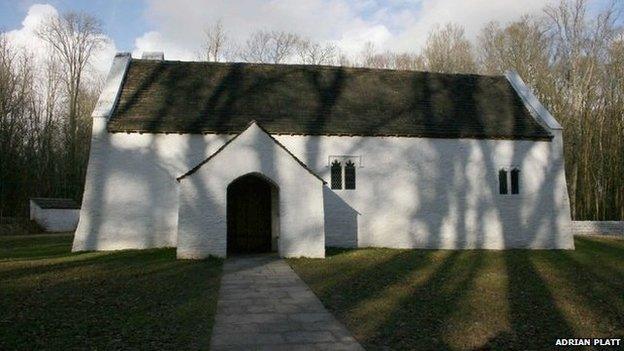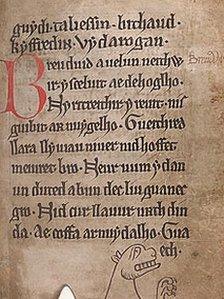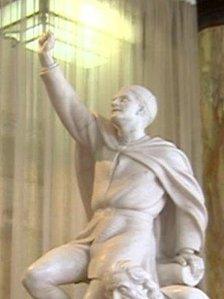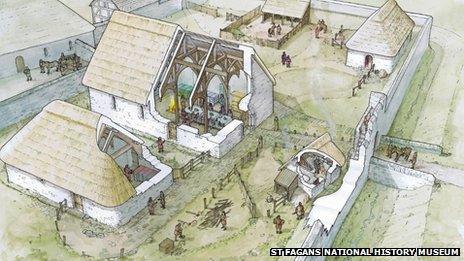What was Wales like the last time taxes were paid
- Published

In the 13th Century people would have worshipped in a church like the now-restored St Teilo's
As the Welsh government publishes plans to reintroduce Welsh taxes for the first time since the 13th century, BBC News looks at what life was like in Wales last time there was direct Welsh taxation.
Who was in charge?

King Edward II of England was first made Prince of Wales by his father
Wales in the 13th Century was a mixture of regional powers. By the middle of the previous century, most of the lowland areas, particularly in south Wales, were under English control, in the form of Anglo-Norman barons from the Marches and across Glamorganshire to Pembroke.
Gwynedd and the north-west of Wales remained largely independent. Welsh princes acknowledged the ruler Llywelyn the Great and his successor Llywelyn ap Gruffudd as the overarching Prince of Wales. But as the century wore away, and Edward I of England came to power, the balance of power changed as Llywelyn refused to pay tribute to Edward.
In 1276 Edward I led an invasion into Gwynedd and forced Llywelyn into the very top corner of the country, and set about his castle-building programme. An uprising in 1282 led to renewed fighting, and saw the death of Llywelyn. By the following year it was over, and English domination over Wales was entrenched. Edward's son, the future Edward II, was created Prince of Wales.
What language did people speak?

The Black Book of Carmarthen dates back to the 13th Century
At the start of the 1200s, Welsh was the language of the common people.
It was how people did business, conducted family life and worshipped. By the end of the century, daily business was increasingly done in English.
English settlers were encouraged to move to Wales by free land grants and the imposition of English law.
As the settlers moved into the more fruitful lowlands, Welsh speakers were increasingly pushed to the higher ground, although there was crossover between the two.
Money and taxes
One of the main changes through the course of the 13th Century was the difference in the way people paid for things.

Llywelyn ap Gruffudd did not consult over taxing people's cattle and horses
According to Dr Mark Redknap, head of collections and research in the history department at the Museum of Welsh Life, the old system of "render" was starting to change.
"It's fair to say that from about the end of the 13th Century the Welsh were more familiar with using money than they had been a century earlier," he said.
"You had an increasing use of coinage whereas there is very much a barter economy with the pre-Norman period, and payment in kind."
He said taxes to the English king were paid in cash. Coinage though was still more at the stage where the actual weight of the coins, in silver for example, was what provided the value rather than a nominal amount printed on the coin.
As well as tithes paid to the church, Llywelyn had tried to levy tax on cattle and in lieu of military service. But it was Edward I who pushed formalised tax collection.
By the time of his death in 1307, tax revenue from Wales had tripled.
How did people live?
According to Gerald of Wales, the Welsh were a militaristic society, more concerned with learning to fight rather than ploughing their land more than necessary.
But this only applied to free men: about a third of the population at the start of the century were bonded to a lord and worked for them on large estates.
The common people wore simple clothes: a tunic and thin cloak.

One of the courts of Llywelyn the Great is being reconstructed at St Fagans
Although much of Wales was rural, with large forests being an important source of food and resources for many, fledgling towns had been established by the Normans in places like Carmarthen and Cardiff and by the end of the century there were around 90 small towns, although few had populations over 1,000.
It is worth remembering that the population of Wales was tiny in comparison to now, with the whole population equivalent to modern-day Cardiff.
Sources: BBC History; St Fagans National History Museum; The People of Wales ed Gareth Elwyn Jones and Dai Smith
- Published23 September 2014
